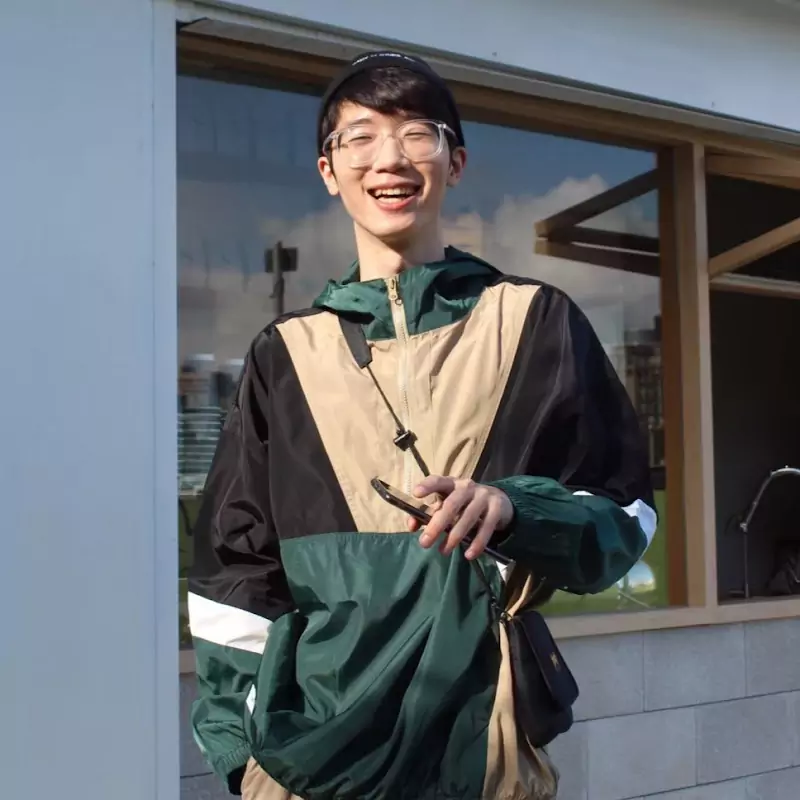雖然這篇text用法鄉民發文沒有被收入到精華區:在text用法這個話題中,我們另外找到其它相關的精選爆讚文章
在 text用法產品中有34篇Facebook貼文,粉絲數超過4萬的網紅Hapa Eikaiwa,也在其Facebook貼文中提到, ================================= スムーズな会話に欠かせない「Get」の基本用法 ================================= 中学で教わった基本動詞の一つであるGet。「~を手に入れる」の意味で覚えている人も多いと思いますが、ネイティブの...
同時也有6部Youtube影片,追蹤數超過2,750的網紅馬它mata x,也在其Youtube影片中提到,社群教室來到EP.3了!!! 這個企劃反應比想像中好~預計會繼續做好一陣子 今天是【IG圖文公式解】 完整的圖片以及文案最近趨勢以及小工具分享 大家趕緊收藏起來吧~ ■別忘了來IG找我玩→ IG : Haocheng.chan.92 https://www.instagram.com/haoche...
「text用法」的推薦目錄
- 關於text用法 在 【 eclat select 】 代表 沓名香織 Instagram 的最佳貼文
- 關於text用法 在 潘潘 Celine Instagram 的最讚貼文
- 關於text用法 在 時事英文 English News Podcast Instagram 的最讚貼文
- 關於text用法 在 Hapa Eikaiwa Facebook 的最佳貼文
- 關於text用法 在 Eric's English Lounge Facebook 的最佳貼文
- 關於text用法 在 小資女孩的奮鬥日記 Facebook 的最佳貼文
- 關於text用法 在 馬它mata x Youtube 的最佳解答
- 關於text用法 在 與芬尼學英語 Finnie's Language Arts Youtube 的最讚貼文
- 關於text用法 在 Carl Ho卡爾 頻道 Youtube 的最佳解答
text用法 在 【 eclat select 】 代表 沓名香織 Instagram 的最佳貼文
2021-09-27 04:56:49
【肌質改善化粧品】 CHARMME BEAU(シャルムボー) クレンジング、洗顔 お肌の悩みを解決したい!と思った時 何よりも1番最初にオススメしたいのが こちらのクレンジング+洗顔!! え。落とすだけなのにそんなに必要なのー? と思う方もいらっしゃると思います。 365日毎日、最もお肌負担...
text用法 在 潘潘 Celine Instagram 的最讚貼文
2021-09-27 03:04:13
@makeupforever 一直都知道他們家的底妝很好用 這次終於用到了!! #柔霧全能遮瑕底妝棒 原本看到品名以為會很厚重讓肌膚很悶 結果實際上使用顛覆我想像耶🤩 直接愛不釋手 每天都用~~ 智慧刷頭設計能完美貼合臉型 一深一淺的色號 可以一支用來遮瑕打底 一支用來修容打亮! 膏體用起來滑...
text用法 在 時事英文 English News Podcast Instagram 的最讚貼文
2021-09-24 17:04:23
似曾相識的感覺 👉 Déjà vu PS: 有一部 2006 年 Denzel Washington 的動作片叫 Déjà Vu 源自法文所以有特別字母 é 以及 à, 但因為這個 #名詞 在英文裡已很常見, 所以很多人甚至大媒體會直接使用 “deja vu”。 常見用法有 👉 Feels li...
-
text用法 在 馬它mata x Youtube 的最佳解答
2020-04-28 18:00:04社群教室來到EP.3了!!!
這個企劃反應比想像中好~預計會繼續做好一陣子
今天是【IG圖文公式解】
完整的圖片以及文案最近趨勢以及小工具分享
大家趕緊收藏起來吧~
■別忘了來IG找我玩→ IG : Haocheng.chan.92
https://www.instagram.com/haocheng.chan.92/?hl=zh-tw
/
【時間軸在此,發文前請先閱讀喔】
01:00 IG圖片格式 4:5
02:49 拼貼組圖法教學
04:40 如何在IG上使用特殊字體
(網站 : https://coolsymbol.com/cool-fancy-text-generator.html )
05:40 資訊整理重要性
(想做出不跑版文案,可以看社群教室EP.1)
07:03 Hashtag用法
IG限動教戰守則! 圖片格式有影響?不用APP就能做出高質感限動|社群教室EP.2|馬它mata x
https://www.youtube.com/watch?v=6p8g1XrspmM&t=90s
IG經營三個新手須知!發文怎樣不跑版、修圖地雷、取名小技巧|社群教室EP.1|馬它mata x
https://www.youtube.com/watch?v=ahujyGQpz0E
/
MUSIC :
🎵LAKEY INSPIRED - Days Like These
https://www.youtube.com/watch?v=RTGEoh-vPIc
/
◆ 如果想看更多關於我的食物 / 穿搭 / 旅遊 /日常分享,可以到下方連結
◆ 個人IG : 👉 Haocheng.chan.92
◆ 食物IG : 👉 Food_map_camel
◆ FB粉絲專頁 :👉 https://reurl.cc/e5v12x
◆ Popdaily創作者計畫👉https://www.popdaily.com.tw/user/28032
/
觀看我的更多不同影片 :
GRWM一些新品+聊聊斷捨離朋友&社交問題,要經營多少段友誼關係? |馬它mata x
https://www.youtube.com/watch?v=8fL1Fzs_ukU&t=158s
4個台北“超日常”打卡點!!不用出遠門,懶人也能簡單拍好照!這些拍照元素通通記起來阿~|馬它Mata x
https://www.youtube.com/watch?v=WsT-VAEY16c
如何「紮衣服」? 男女三種常見紮法示範,NG地雷別再踩啦~全紮法 / 半紮法 / 前半紮法 |男生穿搭|Mata 穿搭
https://www.youtube.com/watch?v=r5vPw7VhEUY
20歲是「必須」迷惘的年紀 |馬它mata x
https://www.youtube.com/watch?v=0eeSb9TWZS4
/
喜歡我這支影片的話,記得按讚和分享給你所有的朋友
也可以去我的IG看看關於我的更多分享
記得訂閱我的頻道呦d(`・∀・)b
#社群教室#IG教學#IG經營 -
text用法 在 與芬尼學英語 Finnie's Language Arts Youtube 的最讚貼文
2018-12-11 19:00:14Sign up 取得免費學習資源:http://bit.ly/fla-nl
=========
【成人英語 One-day course】Modal Verbs 情態助動詞
日期:2018年12月14日 (五)
時間:7:30 pm - 9:00 pm
收費:Finnie's Club 會員價 ($80) / 非會員價 ($180)
人數:~7人
地點:與芬尼學英語教室(地址:旺角窩打老道53-55號匯達中心9樓A室)
報名表格:https://goo.gl/forms/ZZfdbaR70D7jNKas1
舊生可直接經 WhatsApp 報名:https://wa.me/85266270418?text=我想報名參加ModalVerbs一天課程
==========
▍課程資料
● 成人英語再起步、One-day course、說話/寫作實戰班
時間表 ► http://bit.ly/fla-adult-infosheet
成人英語再起步報名表格 ► http://bit.ly/成人英語再起步
● 中、小學常規班
課程資料、時間表 ► http://bit.ly/fla-courses
訂閱與芬尼學英語 ► http://bit.ly/flayt-sub
喜歡我們的短片嗎?到 Patreon 支持我們! ► http://bit.ly/fla-patreon
▍播放清單:
今天只學一個字 ► http://bit.ly/2DRQPgE
Word Pairs 怎樣分 ► http://bit.ly/2hS1MCF
時事英語 ► http://bit.ly/2RqrMok
名人英語 ► http://bit.ly/2EUc8QO
品牌名學英語 ► http://bit.ly/2qd3mUq
朗誦節特訓 ► http://bit.ly/2PBqZno
▍更多學習資源:
● 加入 Finnie's Facebook 群組:bit.ly/flafbgp
● 訂閱電子報:http://bit.ly/fla-nl
● 下載免費學習資源:http://bit.ly/36VhrYS
▍Follow 芬尼:
● 博客: http://bit.ly/fla-blog
● Facebook: http://bit.ly/fla-facebook
● Instagram: http://bit.ly/fla-instagram
● Pinterest: http://bit.ly/fla-pinterest
?Free stuff!!! :)
● Use my iHerb Discount Code: ASC7218
● Sign up at AirBnb and get HKD$290 in travel credit: https://www.airbnb.com/c/tiffanys213
● Get a FREE first Uber ride (up to HK$50): https://www.uber.com/invite/tiffanys2213ue
● Get TWO months of free SkillShare premium with this link:
https://skl.sh/2IIHhr8 -
text用法 在 Carl Ho卡爾 頻道 Youtube 的最佳解答
2017-07-15 14:35:01如受到過份的暴力行為對待
請及早告訴信任的人
尋找親人或機構協助
不要像記憶枕頭一樣
默默啞忍承受...直到爆發 奪去性命
這是大家都不想看到的結局
以下機構可以提供有關暴力問題的協助
社會福利署 : http://www.swd.gov.hk/vs/chinese/welfare.html
香港婦女中心協會 : http://womencentre.org.hk/services/70-counselling-and-legal-support/30-womenshelpline-2/
家庭計劃指導會 : http://www.famplan.org.hk/fpahk/zh-text/template1.asp?style=template1.asp&content=services/clinic/hotline.asp
---------------------------------------------------------------
▷ 背景音樂資訊 BGM (Background Music) Info. ◁
BGM1: "Mob Battle" by Silent Partner
BGM2: "Fight Or Flight" by Ethan Meixsell
BGM3: "Day Of Recon" by Max Surla/Media Right Productions
~~~~~~~~~~~~~~~~~~~~~~~~~~
(゚∀゚) ノシ
更多關於我的 More About Me
▷ DIY教學 DIYs Guide ◁ https://goo.gl/u4ENC7
▷ 趣味系列 Funny Video ◁ https://goo.gl/SrmBPm
▷ 挑戰系列 Challenges ◁ https://goo.gl/IGt6Kg
▷ 實驗系列 Experiments ◁ https://goo.gl/MzwL7f
▷ 我的倉鼠系列 My Hamsters ◁ https://goo.gl/8sNzHy
▷ Unboxing Pokemon 開箱系列 ◁ https://goo.gl/CE6MpC







text用法 在 Hapa Eikaiwa Facebook 的最佳貼文
=================================
スムーズな会話に欠かせない「Get」の基本用法
=================================
中学で教わった基本動詞の一つであるGet。「~を手に入れる」の意味で覚えている人も多いと思いますが、ネイティブの日常会話では実に様々な意味で非常によく使われる単語の一つです。今回は、知ってれば必ず日常会話で役立つ代表的なGetの用法をご紹介します!
--------------------------------------------------
1) 「〜もらう・受け取る」を表すgetの使い方
--------------------------------------------------
get の一つ目の基本イメージは、色々な物を手に入れることです。人から何かをもらったり、受け取ったりする時に使われ、receiveのより口語的な言い方として使われます。ちなみに、良いものだけでなく、get a speeding ticket(スピード違反で切符を切られる)のようによくないものを受け取るときにも使われます。
・get a present(プレゼントをもらう)
・get a message(メッセージ受け取る)
・get advice(アドバイスをもらう)
<例文>
I got a new laptop for my birthday.
(誕生日に新しいパソコンをもらいました)
I got a text from Mike and he said he's running 10 minutes late.
(マイクからショートメッセージがあって、10分遅れるって)
Who do you usually get advice from?
(普段は誰からアドバイスをもらっているんですか?)
I got a speeding ticket this morning.
(今朝、スピード違反で切符を切られてしまいました)
また、人から何かをもらうだけでなく、自分で努力した結果何かを手に入れるときにも使われます。例えば、「仕事に就く・仕事が決まる」は get a job、「良い成績を取る」は get good grades、「昇進する」は get a promotionと表します。その他、getには「お金を得る」の意味合いもあり、「彼って月いくら稼いでいるの?」は「How much does he get a month?」のように表現します。
<例文>
It took me a couple of months but I finally got a job.
(数ヶ月間かかりましたが、やっと仕事が決まりました)
I got good grades when I was in high school.
(私は高校生のとき、成績がよかったです)
I heard you got a promotion. Congrats!
(昇進したんだって?おめでとう!)
It's an easy job. I get 20 bucks an hour just for watching the dogs.
(すごい楽な仕事だよ。犬の面倒を見るだけで時給20ドルもらえるんだ)
--------------------------------------------------
2) 「~を買う」を表すgetの使い方
--------------------------------------------------
getは「〜を買う」の意味としても使われます。buy のより口語的な言い回しとして使われ、お金を払って何かを手に入れるニュアンスがあります。また、レストランでは「注文する」の意味としても使われ、友達に「何を注文するの?」と聞く場合は「What are you going to get?」と言います。さらに、getは「おごる」や「御馳走する」の意味で使うこともでき、「I'll get it.」の一言だけで「私がおごるよ」を意味します。
<例文>
I really like your scarf. Where did you get it?
(そのマフラーいいね。どこで買ったの?)
You already got the iPhone 12? Did you pre-order it?
(もうiPhone12を手に入れたの?予約したの?)
I'm thinking about getting the B.L.T sandwich. What are you going to get?
(私はBLTサンドイッチにしようかな。あなたは何を注文するの?)
Don't worry. I'll get it today.
(心配しないで。今日は僕がおごるよ)
--------------------------------------------------
3) 「〜を取りに行く」を表すgetの使い方
--------------------------------------------------
何かを取りに行ったり、忘れ物を取りに戻ったりなど、物を取りに行って戻ってくるときに get が使われます。日常会話では、go and get ____ のように表すことが多く、例えば「僕が取り行くよ」は「I'll get it.」または「I'll go and get it.」両方のパターンで表すことができます。その他、「〜を迎えに行く」の意味としても使われ、友達に「迎えに来てくれる?」と聞く場合は「Can you get me?」または「Can you come and get me?」、「迎えに行くよ」は 「I'll get you.」もしくは「I'll go and get you.」と言います。
✔「迎えに行く」はgo and get、「迎えに来る」はcome and getで覚えましょう。
<例文>
I'll get it for you. What do you want to drink?
(僕が取りに行くよ?何飲みたい?)
I'm going to go and get Hiro from the train station.
(駅にヒロを迎えに行きます)
Oh no. I forgot my mask. I need to go back to the car and get it.
(ヤバイ、マスクを忘れちゃった。車に取りに戻らないと)
--------------------------------------------------
4) 「〜を理解する」を表すgetの使い方
--------------------------------------------------
相手の言いたいことが分かったり、意図が理解できたときに英語ではよく「I get it.」と言います。ここでは相手のアイディアを「手に入れる」、要するに「理解する」ことを意味します。この表現は、「I don't get it.」のように否定形で使われることが多く、相手の言いたいことが理解できなかったり、冗談が分からない時に使われます。
<例文>
I think I'm starting to get it. Let me practice a little more.
(なんとなく分かってきた気がします。もうちょっと練習します)
Why is that funny? I don't get it.
(何がそんなに面白いの?私には理解できない)
Do you get what he's saying? It makes no sense to me.
(彼が言っていることわかる?私には全然意味が分かりません)
--------------------------------------------------
5) 「〜に到着する」を表すgetの使い方
--------------------------------------------------
get は「着く」や「到着する」も意味し、日常会話では arriveの代わりによく使われます。例えば、待ち合わせに遅れてきた友達が「Sorry I'm late. Have you been waiting long?(遅れちゃってごめんね。だいぶ待った?)」と言った時は、「No, I just got here too.(ううん、僕も今着いたところだよ)」と言う具合に返事をするといいでしょう。
<例文>
There's so much traffic. What time do you think we'll get there?
(すごい渋滞だね。何時ぐらいに到着すると思う?)
Have a safe flight! Message me when you get to Okinawa.
(気をつけて行ってきて。沖縄に着いたらメッセージ送ってね)
I got home, took a shower and went straight to bed.
(家に帰ってシャワーを浴びてその後すぐに寝ました)
--------------------------------------------------
6) 「〜になる(状態が変化する)」を表すgetの使い方
--------------------------------------------------
getは状態の変化を表す時にも使われ、「〜になる」を意味します。状態の変化を表す時は一般的に getting ____ の形式が使われ、例えば、「疲れてきた」は 「I'm getting tired.」、「お腹が空いてきた」は「I'm getting hungry.」、「寒くなってきた」は「It's getting cold.」のように getting の後には形容詞がフォローします。
その他、「〜しやすい」をget ____ easilyと表現することができ、例えば、「私が暑がりです」は「I get hot easily.」、「彼は飽きっぽい」は「He gets bored easily.」、「彼女は嫉妬深い」は「She gets jealous easily.」のように表現します。
<例文>
I'm getting hungry. Do you want to grab dinner soon?
(お腹空いてきたな。そろそろ夕食に行かない?)
It's getting chilly these days. It's starting to feel like autumn.
(最近、肌寒くなってきました。秋めいてきましたね)
I carry around a blanket with me because I get cold easily.
(私は寒がりなのでいつも毛布を持ち歩いています)
--------------------------------------------------
7) 「病気になる」を表すgetの使い方
--------------------------------------------------
風邪を引いたり、インフルエンザにかかったり、病気になる時にもgetが使われます。例えば、「風邪を引いた」は「I got a cold.」、「インフルエンザにかかった」は「I got the flu.」、「彼は病気になった」は「He got sick.」と言います。ちなみに、「頭痛がする」は「I got a headache.」、「熱がある」は 「I got a fever.」、「喉が痛い」は「I got a sore throat.」のように表します。
<例文>
It sounds like you got the flu. Drink a lot of water and rest up.
(インフルエンザにかかったみたいだね。たくさん水分を取ってゆっくり休むんだよ)
My cat got sick and I had to take him to the vet yesterday.
(私の猫が病気になって、昨日動物病院に連れて行かないといけませんでした)
I think I got a cold. I got a fever and a sore throat.
(風邪を引いたと思います。熱があり、喉も痛いです)
--------------------------------------------------
8) 「どうにかして~させる」を表すgetの使い方
--------------------------------------------------
この表現は、人に何かをしてもらう時、または人に何かをさせる時の両方で使われますが、相手を説得したり騙したりするなど「どうにかして」何かをさせるニュアンスが含まれます。例えば、薬を飲みたくない子供を説得して飲ませる場合は「I got my child to take the medicine.(子供に何とかして薬を飲ませました)」と表します。
<例文>
I finally got my dad to stop smoking cigarettes.
(なんとかしてやっとお父さんにタバコをやめさせました)
I can't get my son to do his homework. What do you think I should do?
(何をしても息子が宿題をやりません。どうしたらいいと思いますか?)
My cat pees all over the house. How can I get her to pee in her litter box?
(私の猫は家中におしっこをします。どうしたら猫のトイレでおしっこをしてくれると思いますか?)
--------------------------------------------------
9) 「〜する機会を得る」を表すgetの使い方
--------------------------------------------------
get to do somethingは「〜する機会を得られる」を意味し、have the opportunity toのより口語的な言い方として使われます。例えば、「国際交流パーティーでいろいろな人たちとお話しすることができました」と言いたい場合は「I got to talk with a lot people at the international exchange party.」のように表現し、got to の後には動詞が続きます。ここでは、I got an/the opportunity to ____ と表現することもできますが、日常会話ではan/the opportunityを省くことがよくあります。
<例文>
I got to travel all over the world in my twenties.
(私は20代の時に世界中を旅行することができました)
Did you get to see the autumn leaves when you were in Japan?
(日本滞在中に紅葉を見ることはできましたか?)
At the spring training camp, I got to meet some of the Dodgers' players.
(スプリングトレーニングで何人かのドジャース選手に会えました)
--------------------------------------------------
10) Get + 前置詞の組み合わせ
--------------------------------------------------
getはいろいろな前置詞と組み合わせて使うことができます。例えば、「電車に乗ろう」は「Let's get on the train.」、「バスを降りよう」は「Let's get off the bus.」、「プールに入ろう」は「Let's get in the pool.」、「ここから出よう」は「Let's get out of here.」と言う具合に表現します。getと前置詞を組み合わせて使う場合は「動いている」イメージになります。
<例文>
Get on bus number 10 and it'll take you to downtown.
(10番バスに乗れば繁華街まで行きます)
This place is way too crowded. Let's get out of here.
(ここは混み過ぎだ。出ましょう)
Which stop are we getting off on? Is it the next one?
(どの駅で降りるの?次の駅?)
ブログ記事URL:https://hapaeikaiwa.com/?p=23377
~~~~~~~~~~~~~~~~~~~
無料メルマガ『1日1フレーズ!生英語』配信中!
通勤・通学などのちょとした合間を利用して英語が学べるメルマガ『1日1フレーズ!生英語』を平日の毎朝6時に配信中!ただ単にフレーズを紹介しているだけではなく、音声を使った学習プロセスが組み込まれているので、メルマガを読むこと自体が学習方法!
https://hapaeikaiwa.com/mailmagazine/
~~~~~~~~~~~~~~~~~~~
text用法 在 Eric's English Lounge Facebook 的最佳貼文
[專頁公告] 英文學習「生態系」更新
English Learning Ecosystem Update
As I began exploring Instagram, I struggled to find a way to deliver useful academic content. Instagram posts typically focus on images, short clips, and concise text, which are attention grabbing but not always entirely conducive to language learning. I looked over the posts of established Instagram English learning accounts, and experimented with vocabulary posts and even news posts for a couple of weeks. Not wanting to post just images, I thought about creating something new even with the rigid format of the platform.
當我開始研究怎麼用IG,我想盡了各種辦法,希望能提供大家一些實用的學術內容。 IG 的特色著重在圖片、短片以及簡潔的文字,這樣的方式雖然很容易引人注目,卻不全然有助於語言學習。我瀏覽了 IG 上英文教學網紅的貼文,並在這幾週嘗試發了一些學術單字與新聞相關的文章。我並不想只是發一些圖片,而思考著要如何在既有框架下創作一些新的東西。
★★★★★★★★★★★★
A tenet of using tech in education is to engage students with what they are familiar with, not give them an entirely new platform that is difficult to use. So, how could I create a new series of Instagram posts that is both educational and unique? I thought about my goal to disseminate academic English resources, and how I could leverage my experience as a curriculum writer and voice recording artist for public school textbooks.
一個使用科技進行教育的原則是用學生熟悉的方式與他們互動,而非用了全新的平台卻使他們難以學習。那麼,我應該如何創作獨特且具教育意義的一系列全新 IG 發文呢?我想到了我傳遞學術英文資源的目標,以及思考到該如何發揮身為教科書編輯者與音頻錄製者的經驗。
★★★★★★★★★★★★
So far, this is what I have at the moment. I will post Word of the Day (每日一詞), high frequency vocabulary words that you see in academic texts and sometimes on the news. These Tier 2 academic vocabulary words are not exclusive to a single domain and complement the theme-based approach I’ve taken with my mind-mapping vocabulary class. You can find other vocabulary learning methods here.
這是我目前所想到的內容:我會發布「每日一詞」,也就是學術文章或是新聞中有時出現的高頻字彙。這些Tier 2學術詞彙並不限於單個領域,更補充了我在心智圖詞彙攻略課程中採用的主題式學習法。你還可以在下面網站找到其他詞彙學習方法。
🎓 詞彙學習方法:http://bit.ly/2JGXKvK
In these posts, I added the pronunciation, collocation, and example sentences of each word for students. These words will be helpful to university-level students who often read academic texts and the news. Students can access them by simply clicking on the hashtag 學術英語單字.
在這些貼文中,我為學生提供了發音、搭配用法和例句。這些單字會對經常閱讀學術文章和新聞的大學程度學生有所幫助。學生只要點貼文上的#學術英語單字即可看到貼文。
🎓 學術英文單字: https://bit.ly/3cxH091
★★★★★★★★★★★★
To help students use more precise and common academic phrases, I then added Academic Phrases (每日一句), set phrases that appear in both academic speech and writing. These phrases have varying functions from introducing a topic to comparing and contrasting ideas. There is a difference between speech and writing, so I picked words that could be used for both. If one is used only in a specific context, I will make note of it in the video recording. This series of posts will help students with language output, and can be found under the following hashtag 學術英語片語.
為了幫助學生使用更精準、更道地的常見學術用語,我們接著會進入「每日一句」,也就是在學術演說與寫作中常見的用語。這些片語具有不同的功能,範圍涵蓋介紹主題到比較、對比想法等等。而演講和寫作之間也有不同,所以我選擇了都可以使用的片語。如果只能在特定情況下使用,我會在影片中特別說明。該系列文章將會幫助學生提高語言輸出能力,可以在 # 學術英語片語找到。
🎓 學術英文片語: https://bit.ly/3aqaQcP
★★★★★★★★★★★★
Last, I will follow up with an abridged version of breaking news (時事英文) with high frequency collocations and audio recordings. This will provide students with the input of not only individual words, but how to use them in output (speech and writing) with context. While all these news posts might seem independent at first, I will eventually link and organize them by theme when there are enough posts. Along with my news class, these extra posts will help students stay aware of current events, acquire set phrases used in journalism, and develop critical thinking. These posts can currently be found under the hashtag EEL時事英文.
最後,我們會跟進精簡版的「時事英文」,其中包含高頻搭配詞與錄音資料。這些內容不僅可以提供你們輸入單字,而且可以幫助你們知道如何搭配情境輸出,再將這些內容使用在口說與寫作中。這些貼文一開始雖然看似獨立,當素材足夠後我會再將他們進行連結與整理。這些貼文和我的新聞課程將幫助學生維持對時事的敏銳度,掌握新聞中使用的固定用法,並養成批判性思維。這些貼文目前可以在 # EEL時事英文。
🎓 批判性思考問題大全: http://bit.ly/34rdtJ7
🎓 EEL時事英文: https://bit.ly/36tDusv
★★★★★★★★★★★★
There is a lot more I want to do to create an ecosystem of free academic English learning materials. I will continue modifying our post format to meet your needs, but these are my plans for Instagram thus far. Join us on our journey to make bilingual academic English resources more readily available to all! Let’s continue to learn and grow together!
建立免費的學術英文學習系統是件大工程,我會持續修改我們發文的格式以符合你們的需求與習慣,這些只是我目前 IG 學術英語學習計畫的一部分。加入我們的旅程來讓雙語的學術英文資源更加普及!讓我們一起學習與成長!
★★★★★★★★★★★★
🎓 學術英文單字: https://bit.ly/3cxH091
🎓 學術英文片語: https://bit.ly/3aqaQcP
🎓 EEL時事英文: https://bit.ly/36tDusv
🎓 批判性思考問題大全:http://bit.ly/34rdtJ7
🎓 該如何學習英文?http://bit.ly/3inxdCP
text用法 在 小資女孩的奮鬥日記 Facebook 的最佳貼文
韓國髮型師指點:5大瀏海整理重點!
不只髮捲挑選有學問,改變分線也有學問...